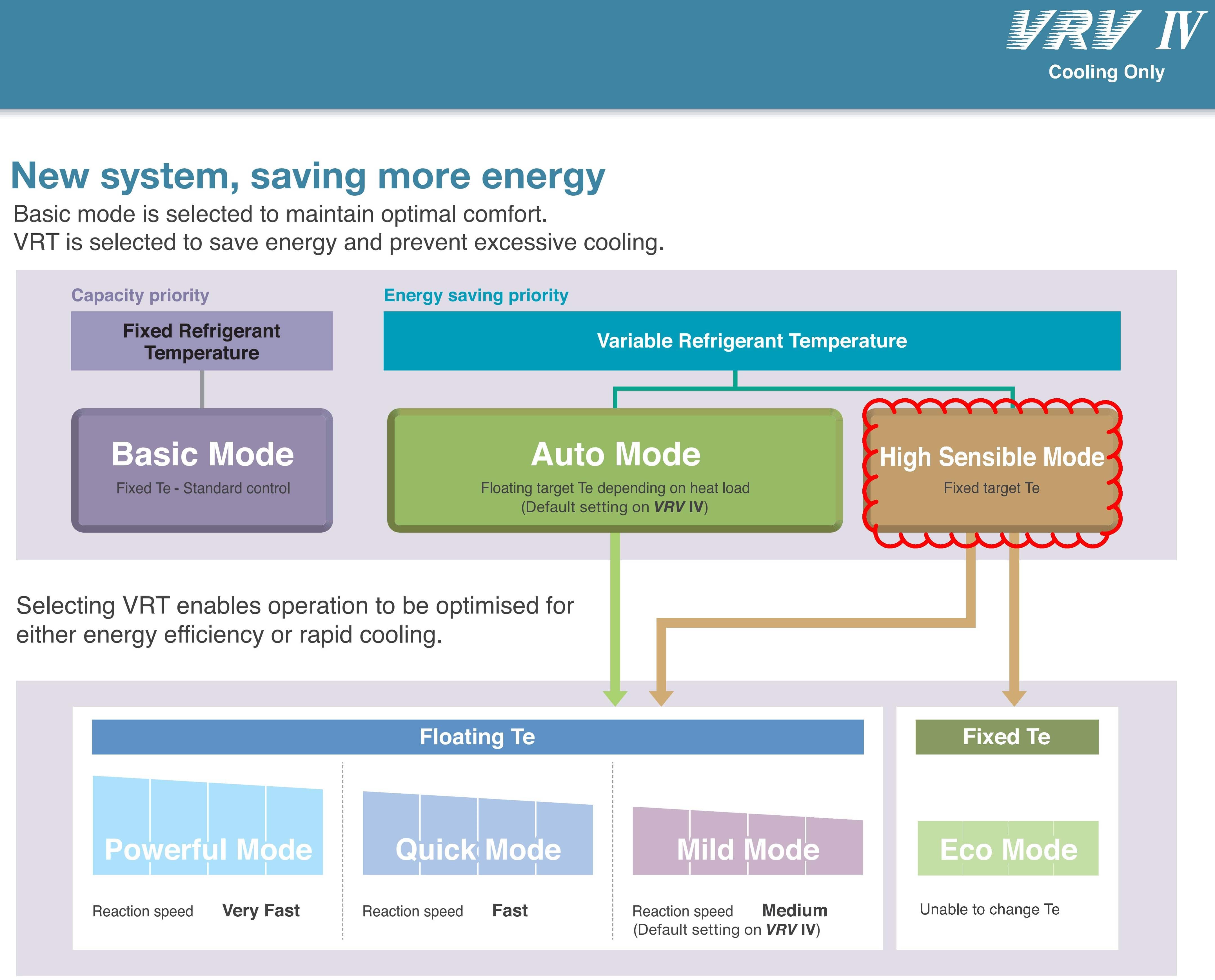VRF with high sensible mode (I don't know what it is normally called in English) is often used in Japan to cool rooms with very high sensible heat load (very low latent heat load) such as Server rooms and Offices with desiccant dehumidifiers. Sensible heat ratio (SHR) is almost 1. The purpose of High sensible mode is to improve COP of VRF and save energy by setting refrigerant evaporation temperature high since there is no need for dehumidification by overcooling. The refrigerant evaporation temperature is set to about 13°C in High sensible mode whereas it is about 6°C in typical VRF. I don't have a good illustration of High sensible mode in English, and the following is an excerpt from DAIKIN's catalogue.

My question is what is best to model this VRF with High sensible mode. If AirConditioner:VariableRefrigerantFlow can automatically change its refrigerant evaporation temperature to be the most energy efficient according to zone sensible and latent loads, I would prefer to use this. But if not, should I use AirConditioner:VariableRefrigerantFlow:FluidTemperatureControl and set Reference Evaporating Temperature for Indoor Unit? Or is there a better way?



